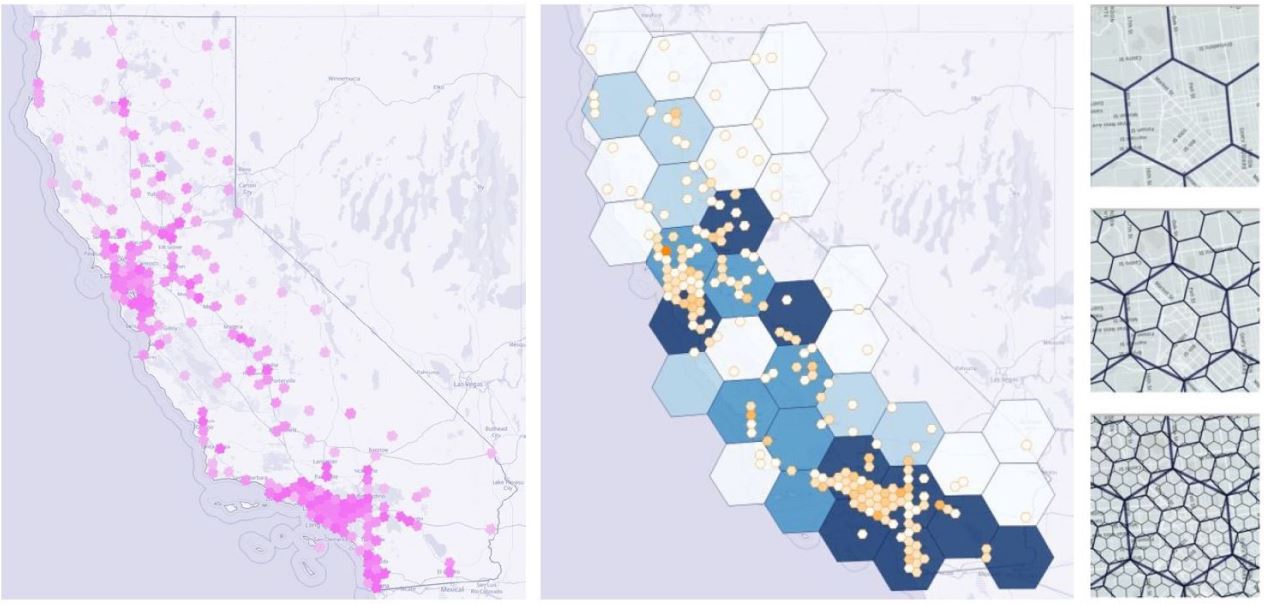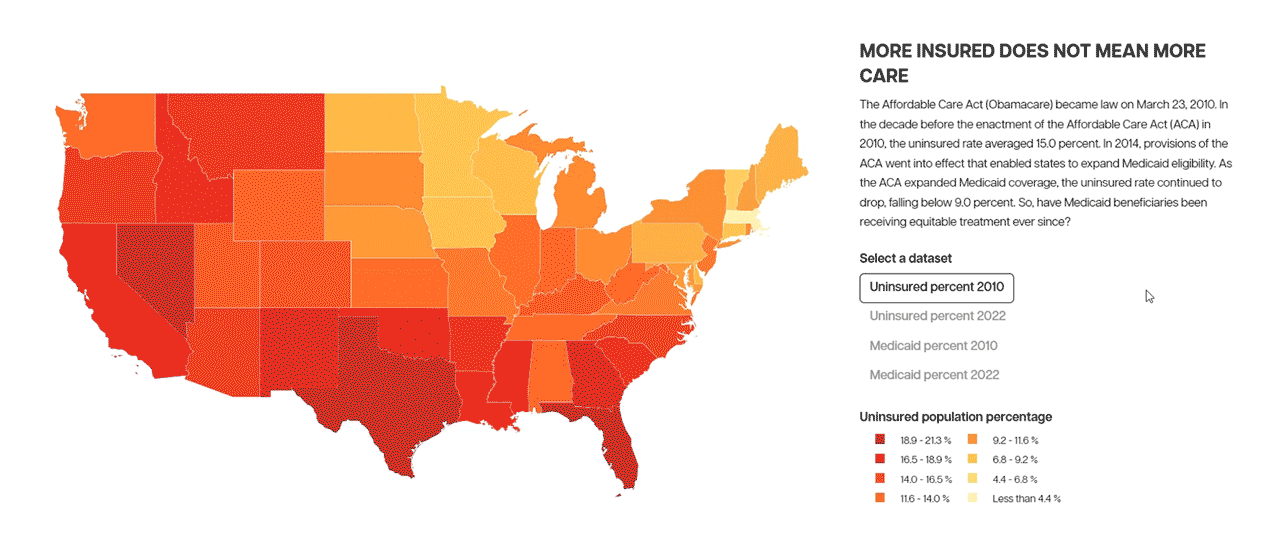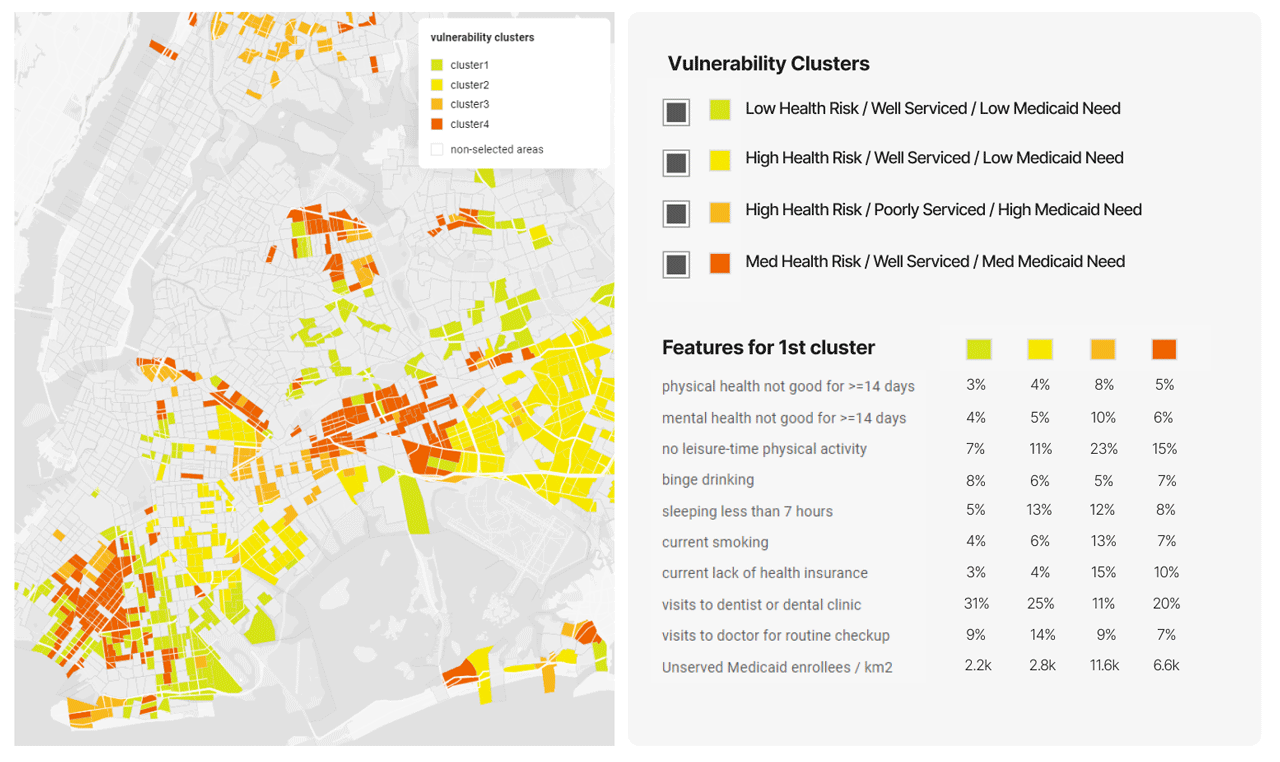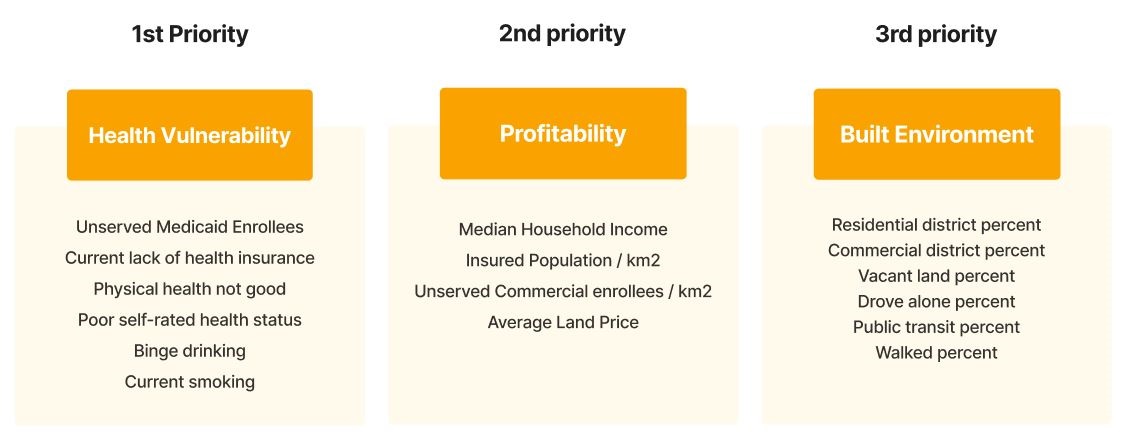Equitable Provision
Kyungho Lee

The Creative Technologies team at Bryden Wood suggested the 'Healthcare Site Identification' proposal for the GSAPP CDP program, aimed at assisting a healthcare provider in expanding hospital services at the county level across various U.S. states. The project's objectives are outlined below.
Site Identification Methodology
The project will analyze, evaluate and combine quantitative with
qualitative data sources and will represent human healthcare needs,
and local built environment conditions for determining site
suitability.
Repeatable Down-Selection Process
The project will explain how the suitability of each potential site
is explored, considering often competing criteria, and will reveal
an attitude towards evidence-based decision making within the
selection process.
To build theoretical foundation for understanding which datasets are essential for equitable provision of healthcare facilities, I conducted preliminary research on disparities in access to primary care service in America.

Inequity in access to healthcare services has long been a significant issue in the US. Prior to the Affordable Care Act (ACA), also known as Obamacare, the primary concern regarding healthcare inequality was the high uninsured rate, which averaged 15.0 percent. However, with the implementation of the ACA in 2014, provisions allowing states to expand Medicaid eligibility came into effect. Consequently, the uninsured rate began to decline steadily, dropping below 9.0 percent. This highlights the increasing importance of providing fair medical treatment to Medicaid enrollees compared to previous years.[1]

Unfortunately, insurance-based discrimination, primarily manifested in physicians' reluctance to accept Medicaid patients due to the low reimbursement rates of the public insurance plan, has been widely reported in healthcare surveys across various states since the implementation of the ACA. A research[2] conducted in 2015 examined reports of insurance-based discrimination and its impact on access to care. The study strongly suggests that Medicaid beneficiaries face limited access to primary care providers compared to those with private insurance. Similarly, my research found that the number of primary care providers accepting Medicaid has decreased drastically, even as Medicaid enrollment has risen since the implementation of the ACA.


My research strongly indicates that distinguishing between Medicaid enrollees and those with commercial insurance is critical for the equitable provision of healthcare among the underserved population, due to significant socioeconomic and healthcare access gaps between these two groups. Therefore, the goal of the Equitable Provision application is to provide a nuanced classification of shortage areas based on the number of unserved Medicaid enrollees and those with commercial insurance to healthcare policymakers and providers.
The application leverages unsupervised machine learning techniques, specifically k-means and hierarchical clustering, to identify distinct clusters within healthcare shortage data. It then uses GPT-4 API to assign meaningful labels to each cluster, translating numeric cluster centroids into human-readable language. Human users as a decision maker are expected to criticize and customize the clustering analysis from LLM. The application performs recursive clustering analysis to identify target shortage areas. Each iteration of clustering allows for more precise targeting, making the analysis increasingly relevant and actionable for healthcare providers and policymakers.

The image above illustrates the use case scenario where policymakers aim to identify specific regions in New York City to improve healthcare access for Medicaid enrollees and populations with high health vulnerability. So, they prioritize health vulnerability clustering as the first priority and ensure that healthcare businesses maintain a minimum level of profitability by considering it as the second priority. Additionally, they evaluate and consider the unique built environment conditions of each targeted area. This way, the application assists users to get a nuanced understanding of healthcare shortage areas throughout New York State.
